Wake up and smell the extinct leucadendrons
Alexandra Daisy Ginsberg reveals what prompted her to go from diagnostic feces to ‘l’eau de leucadendron’ in a collaboration with Ginkgo Bioworks.
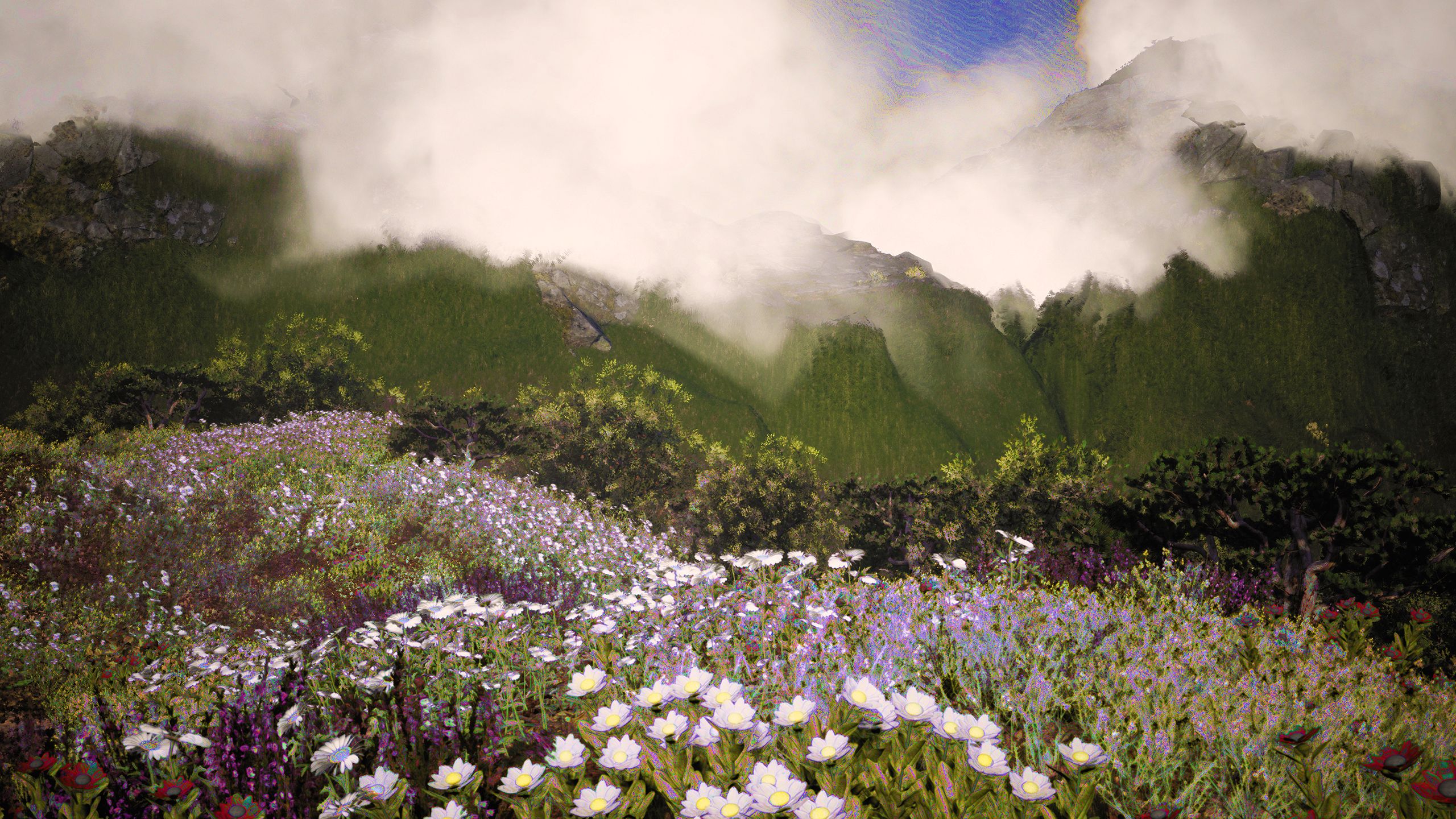
Where others might seek to reconstruct a woolly mammoth from centuries-old sequences, Ginsberg is part of an interdisciplinary project to recreate the scents of plant species lost to human colonial destruction of their habitat. Ginsberg trained in architecture and design, earning a PhD from the Design Interactions program at the Royal College of Art in London. For her art installation Resurrecting the Sublime, she collaborated with the scent researcher and artist Sissel Tolaas and the biotech company Ginkgo Bioworks. The installation has been shown around the world, from the Cooper Hewitt Smithsonian Design Museum in New York to the Pompidou Centre in Paris, and is currently on view at the 17th International Architecture Exhibition in Venice.
Why were you first known as a ‘guerrilla’ artist?
In 2009, I turned up at MIT’s International Genetically Engineered Machine (iGEM) competition with the University of Cambridge iGEM team. While the student team was on stage presenting their work, I was showing a briefcase filled with stool samples made in wax, each a different color, to everyone who might listen. The Cambridge students had genetically engineered [Escherichia coli] strains to produce different colored pigments, and, together with designer James King, we imagined a potential future application: a person would drink probiotic yogurt laced with these synthetic E. coli, turning their feces a different color depending on the chemical markers of different diseases sensed in the body.
Did the colorful turds do more than shock, did they create buy-in for your ideas?
Appearing at a genetic engineering competition with a briefcase of colorful poos was a way to start conversations with the people building this new field. Humor allowed us to start talking together about what synthetic biology might be and how it might affect our lives, in positive, negative and unexpected ways. This led to me joining and curating a large NSF/EPSRC-funded research project, called Synthetic Aesthetics, set up by synthetic biologists Drew Endy and Alistair Elfick and social scientist Jane Calvert. We paired six artists or designers with six synthetic biologists, from the US to Australia to Japan. They spent a month together in each other’s space: first in the lab and then in the studio.
Were the synthetic biologists reticent to enter an artist or designer’s studio?
We asked them only to spend the month thinking about: What does it mean to design life? Can you design it? How might you design it well? This was all extremely unusual. It was a pure scientific research project, not Sci/art or public engagement, with no specific deliverables apart from developing a critical conversation. The pairs continued working together—in some cases they are still working together ten years later—and it established a powerful precedent for synthetic biology to collaborate closely with art and design. You can read more in our book Synthetic Aesthetics. Investigating Synthetic Biology's Designs on Nature.

Alexandra Daisy Ginsberg. Credit: Nathalie Théry.
Alexandra Daisy Ginsberg. Credit: Nathalie Théry.

The E. chromi Scatalog. Credits: Alexandra Daisy Ginsberg & James King, University of Cambridge. © Åsa Johannesson
The E. chromi Scatalog. Credits: Alexandra Daisy Ginsberg & James King, University of Cambridge. © Åsa Johannesson

A yogurt drink containing engineered bacteria will colonize the gut and produce colored poo if disease is detected. Credit: Alexandra Daisy Ginsberg & James King, University of Cambridge.
A yogurt drink containing engineered bacteria will colonize the gut and produce colored poo if disease is detected. Credit: Alexandra Daisy Ginsberg & James King, University of Cambridge.
Credit: Alexandra Daisy Ginsberg & James King, Cambridge University iGEM Team 2009.
Transcript
Alexandra Daisy Ginsberg: E. chromi is an experimental collaboration between designers and scientists, working in synthetic biology. In 2009, seven Cambridge University undergraduates spent the summer learning the tools of synthetic biology, which is essentially a new approach to genetic engineering. Using standardized sequences of DNA, in a format that is called BioBricks, they learnt to engineer bacteria. They designed their own BioBricks using genes copied from existing organisms, inserted them into E. coli, and created bacteria that secrete colors visible to the naked eye. E. chromi went on to win the International Genetically Engineered Machine competition at MIT, in 2009.
Ira Flatow: And joining us now is one of the winners of the iGEM competition. Welcome to Science Friday, Miss Mullin.
Vivian Mullin: Hi! Thank you so much. I'm part of the Cambridge 2009 iGEM team, and our project was called E. chromi. And what we were trying to do is to improve bacterial biosensors. They are bacteria that can tell you the concentration of a pollutant in water, and they can do this because inside them they have a detector. So we developed two different parts, the sensitivity tuner, and this actually tells the detector when to turn on and when to turn off. So you have control over what level of the pollutant you are detecting.
Ira Flatow: And how does the bacteria show that it’s on or off?
Vivian Mullin: We used something called a color generator, which means our bacteria changed color when the detector got switched on.
Ira Flatow: Wow, so they light up in a different color?
Vivian Mullin: They actually change color, visible to the naked eye.
Ira Flatow: So let’s say, if you put a swab of the bacteria in a polluted river, the bacteria would just change color?
Vivian Mullin: Yup exactly. Though you'd probably want to put a sample of your water on a bacterial plate, maybe not the other way round!
Ira Flatow: Well, how would you envisage something like this being used in other ways in the future?
James King: As designers, we worked with the team to explore E. chromi’s potential, as they were developing it in the lab. And together, we imagined a timeline proposing ways that living color could evolve over the next century. These scenarios, some of which are shown in this film, explore the different agendas that could shape E. chromi’s use, and in turn our everyday lives.
One of the first real applications for this technology may arrive quite soon: a cheap, disposable biosensor for testing groundwater contaminated by arsenic.
Alexandra Daisy Ginsberg: Bacteria could also be used to produce natural colorings and dyes. By 2015 there may be a profession of people who hunt for new pigments and the genes responsible, bringing them back for use in the food and textile industry.
By 2039, you can go to the supermarket and buy this simple probiotic yoghurt for cheap, personalized disease monitoring. The yoghurt drink contains E. chromi bacteria, which establish a colony in your gut. They monitor for chemical signals that indicate the presence of a wide range of diseases. If they detect a disease, they start generating the corresponding colored pigment... producing an easily visible output to prompt you to seek your doctor.
James King: 2049 sees the rise of the Orange Liberation Front, a terrorist organization from the Netherlands, who are angry because a biotech company in China has patented the gene for the color orange.
Alexandra Daisy Ginsberg: In 2069, Google releases pollution mapping bacteria into the atmosphere that turn red in the presence of excess CO2. And as the saying goes, “Red Sky in the Morning, Google Health Warning.”
James King: Our collaboration meant that E. chromi was a technology that was designed from the start at both the genetic and the human scale, and with a long-term outlook. We found that design and science could have a meaningful exchange in the lab, which could prove useful when developing technologies in the future.
Ira Flatow: You know, I think it’s a new term to most of the public, synthetic biology. You know, we've heard about all kinds of genetic engineering, and stem cell research... but I think the phrase ”synthetic biology” has not been used a lot lately. But I guess we're going to be hearing more of it.
Where others might seek to reconstruct a woolly mammoth from centuries-old sequences, Ginsberg is part of an interdisciplinary project to recreate the scents of plant species lost to human colonial destruction of their habitat. Ginsberg trained in architecture and design, earning a PhD from the Design Interactions program at the Royal College of Art in London. For her art installation Resurrecting the Sublime, she collaborated with the scent researcher and artist Sissel Tolaas and the biotech company Ginkgo Bioworks. The installation has been shown around the world, from the Cooper Hewitt Smithsonian Design Museum in New York to the Pompidou Centre in Paris, and is currently on view at the 17th International Architecture Exhibition in Venice.

Alexandra Daisy Ginsberg. Credit: Nathalie Théry.
Alexandra Daisy Ginsberg. Credit: Nathalie Théry.
Why were you first known as a ‘guerrilla’ artist?
In 2009, I turned up at MIT’s International Genetically Engineered Machine (iGEM) competition with the University of Cambridge iGEM team. While the student team was on stage presenting their work, I was showing a briefcase filled with stool samples made in wax, each a different color, to everyone who might listen. The Cambridge students had genetically engineered [Escherichia coli] strains to produce different colored pigments, and, together with designer James King, we imagined a potential future application: a person would drink probiotic yogurt laced with these synthetic E. coli, turning their feces a different color depending on the chemical markers of different diseases sensed in the body.

The E. chromi Scatalog. Credits: Alexandra Daisy Ginsberg & James King, University of Cambridge. © Åsa Johannesson
The E. chromi Scatalog. Credits: Alexandra Daisy Ginsberg & James King, University of Cambridge. © Åsa Johannesson

A yogurt drink containing engineered bacteria will colonize the gut and produce colored poo if disease is detected. Credit: Alexandra Daisy Ginsberg & James King, University of Cambridge.
A yogurt drink containing engineered bacteria will colonize the gut and produce colored poo if disease is detected. Credit: Alexandra Daisy Ginsberg & James King, University of Cambridge.
Credit: Alexandra Daisy Ginsberg & James King, Cambridge University iGEM Team 2009.
Transcript
Alexandra Daisy Ginsberg: E. chromi is an experimental collaboration between designers and scientists, working in synthetic biology. In 2009, seven Cambridge University undergraduates spent the summer learning the tools of synthetic biology, which is essentially a new approach to genetic engineering. Using standardized sequences of DNA, in a format that is called BioBricks, they learnt to engineer bacteria. They designed their own BioBricks using genes copied from existing organisms, inserted them into E. coli, and created bacteria that secrete colors visible to the naked eye. E. chromi went on to win the International Genetically Engineered Machine competition at MIT, in 2009.
Ira Flatow: And joining us now is one of the winners of the iGEM competition. Welcome to Science Friday, Miss Mullin.
Vivian Mullin: Hi! Thank you so much. I'm part of the Cambridge 2009 iGEM team, and our project was called E. chromi. And what we were trying to do is to improve bacterial biosensors. They are bacteria that can tell you the concentration of a pollutant in water, and they can do this because inside them they have a detector. So we developed two different parts, the sensitivity tuner, and this actually tells the detector when to turn on and when to turn off. So you have control over what level of the pollutant you are detecting.
Ira Flatow: And how does the bacteria show that it’s on or off?
Vivian Mullin: We used something called a color generator, which means our bacteria changed color when the detector got switched on.
Ira Flatow: Wow, so they light up in a different color?
Vivian Mullin: They actually change color, visible to the naked eye.
Ira Flatow: So let’s say, if you put a swab of the bacteria in a polluted river, the bacteria would just change color?
Vivian Mullin: Yup exactly. Though you'd probably want to put a sample of your water on a bacterial plate, maybe not the other way round!
Ira Flatow: Well, how would you envisage something like this being used in other ways in the future?
James King: As designers, we worked with the team to explore E. chromi’s potential, as they were developing it in the lab. And together, we imagined a timeline proposing ways that living color could evolve over the next century. These scenarios, some of which are shown in this film, explore the different agendas that could shape E. chromi’s use, and in turn our everyday lives.
One of the first real applications for this technology may arrive quite soon: a cheap, disposable biosensor for testing groundwater contaminated by arsenic.
Alexandra Daisy Ginsberg: Bacteria could also be used to produce natural colorings and dyes. By 2015 there may be a profession of people who hunt for new pigments and the genes responsible, bringing them back for use in the food and textile industry.
By 2039, you can go to the supermarket and buy this simple probiotic yoghurt for cheap, personalized disease monitoring. The yoghurt drink contains E. chromi bacteria, which establish a colony in your gut. They monitor for chemical signals that indicate the presence of a wide range of diseases. If they detect a disease, they start generating the corresponding colored pigment... producing an easily visible output to prompt you to seek your doctor.
James King: 2049 sees the rise of the Orange Liberation Front, a terrorist organization from the Netherlands, who are angry because a biotech company in China has patented the gene for the color orange.
Alexandra Daisy Ginsberg: In 2069, Google releases pollution mapping bacteria into the atmosphere that turn red in the presence of excess CO2. And as the saying goes, “Red Sky in the Morning, Google Health Warning.”
James King: Our collaboration meant that E. chromi was a technology that was designed from the start at both the genetic and the human scale, and with a long-term outlook. We found that design and science could have a meaningful exchange in the lab, which could prove useful when developing technologies in the future.
Ira Flatow: You know, I think it’s a new term to most of the public, synthetic biology. You know, we've heard about all kinds of genetic engineering, and stem cell research... but I think the phrase ”synthetic biology” has not been used a lot lately. But I guess we're going to be hearing more of it.
Did the colorful turds do more than shock, did they create buy-in for your ideas?
Appearing at a genetic engineering competition with a briefcase of colorful poos was a way to start conversations with the people building this new field. Humor allowed us to start talking together about what synthetic biology might be and how it might affect our lives, in positive, negative and unexpected ways. This led to me joining and curating a large NSF/EPSRC-funded research project, called Synthetic Aesthetics, set up by synthetic biologists Drew Endy and Alistair Elfick and social scientist Jane Calvert. We paired six artists or designers with six synthetic biologists, from the US to Australia to Japan. They spent a month together in each other’s space: first in the lab and then in the studio.
Were the synthetic biologists reticent to enter an artist or designer’s studio?
We asked them only to spend the month thinking about: What does it mean to design life? Can you design it? How might you design it well? This was all extremely unusual. It was a pure scientific research project, not Sci/art or public engagement, with no specific deliverables apart from developing a critical conversation. The pairs continued working together—in some cases they are still working together ten years later—and it established a powerful precedent for synthetic biology to collaborate closely with art and design. You can read more in our book Synthetic Aesthetics. Investigating Synthetic Biology's Designs on Nature.
Resurrecting the Sublime

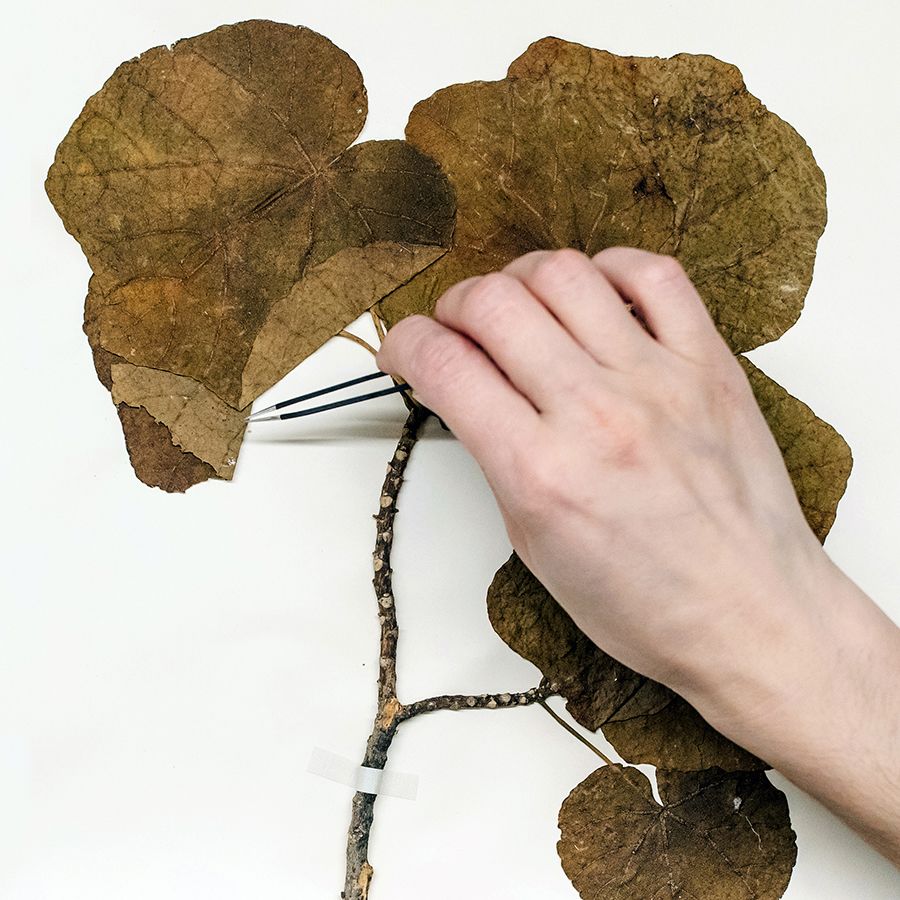
Christina Agapakis of Ginkgo Bioworks taking tissue samples from a dried specimen of Hibiscadelphus wilderianus at the Harvard University Herbarium. Credit: Grace Chuang, courtesy of Harvard University Herbaria, © Ginkgo Bioworks, Inc., the Herbarium of the Arnold Arboretum of Harvard University.
How did the extinct flower aroma project come about?
Resurrecting the Sublime started with Ginkgo Bioworks’ co-founder Jason Kelly saying, “Would it be possible to use synthetic biology to reproduce the smell of an extinct flower?” To Ginkgo, whose customers include fragrance companies, the idea of using synthetic biology as a creative force was really powerful. In 2016, Christina Agapakis, Ginkgo’s creative director, went to the Harvard University herbarium and took tiny tissue samples from the specimens of extinct flowers in their collections. This led to a multiyear research project and then to installations in galleries where hundreds of thousands of people around the world have now experienced a memory of a lost flower.
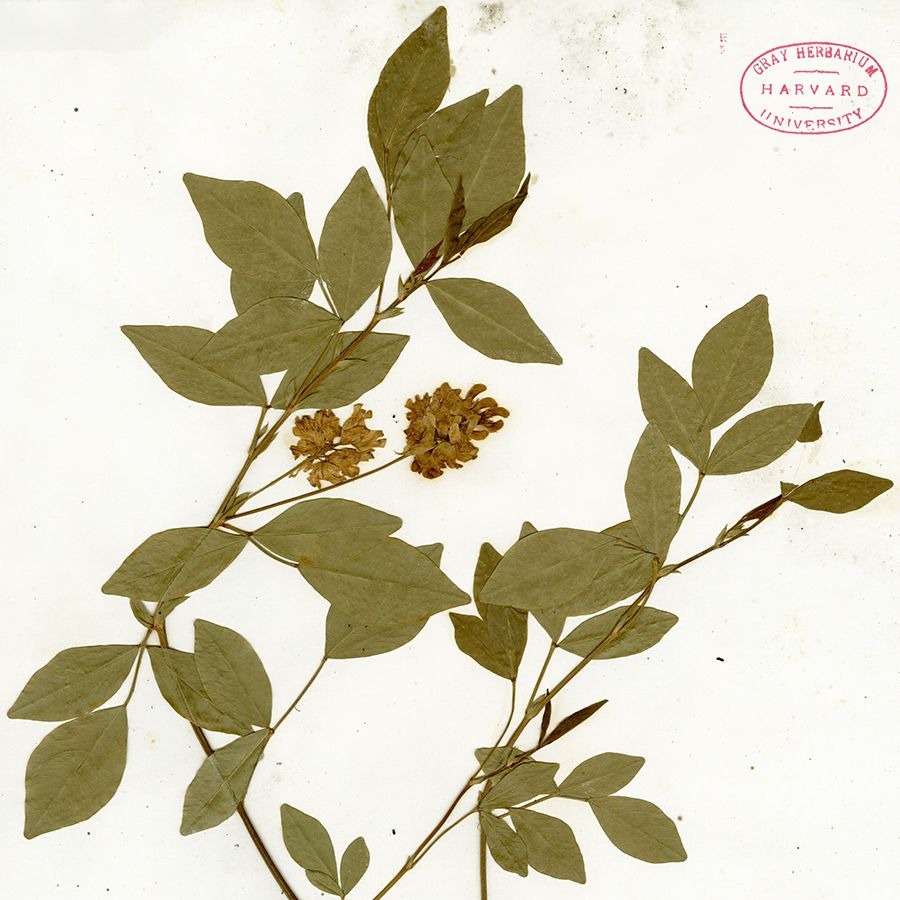
A dried specimen of Orbexilum stipulatum, at Gray Herbarium of Harvard University. Credit: Grace Chuang, courtesy of Harvard University Herbaria, © Ginkgo Bioworks, Inc., the Herbarium of the Arnold Arboretum of Harvard University.
Which were the three flowers you chose to resurrect?
The Hibiscadelphus wilderianus Rock, or Maui hau kuahiwi, grew in ancient lava fields in Maui, Hawaii. It was decimated by colonial cattle ranching, and the last tree died in 1912. The Orbexilum stipulatum was last seen in Kentucky in 1881 before it went extinct and its cultivation failed. In the 1920s a dam completely destroyed its habitat. The Leucadendron grandiflorum, originally from Wynberg Hill, behind Table Mountain in Cape Town, was lost to colonial vineyards. It was last seen in a collector’s garden in London in 1805.
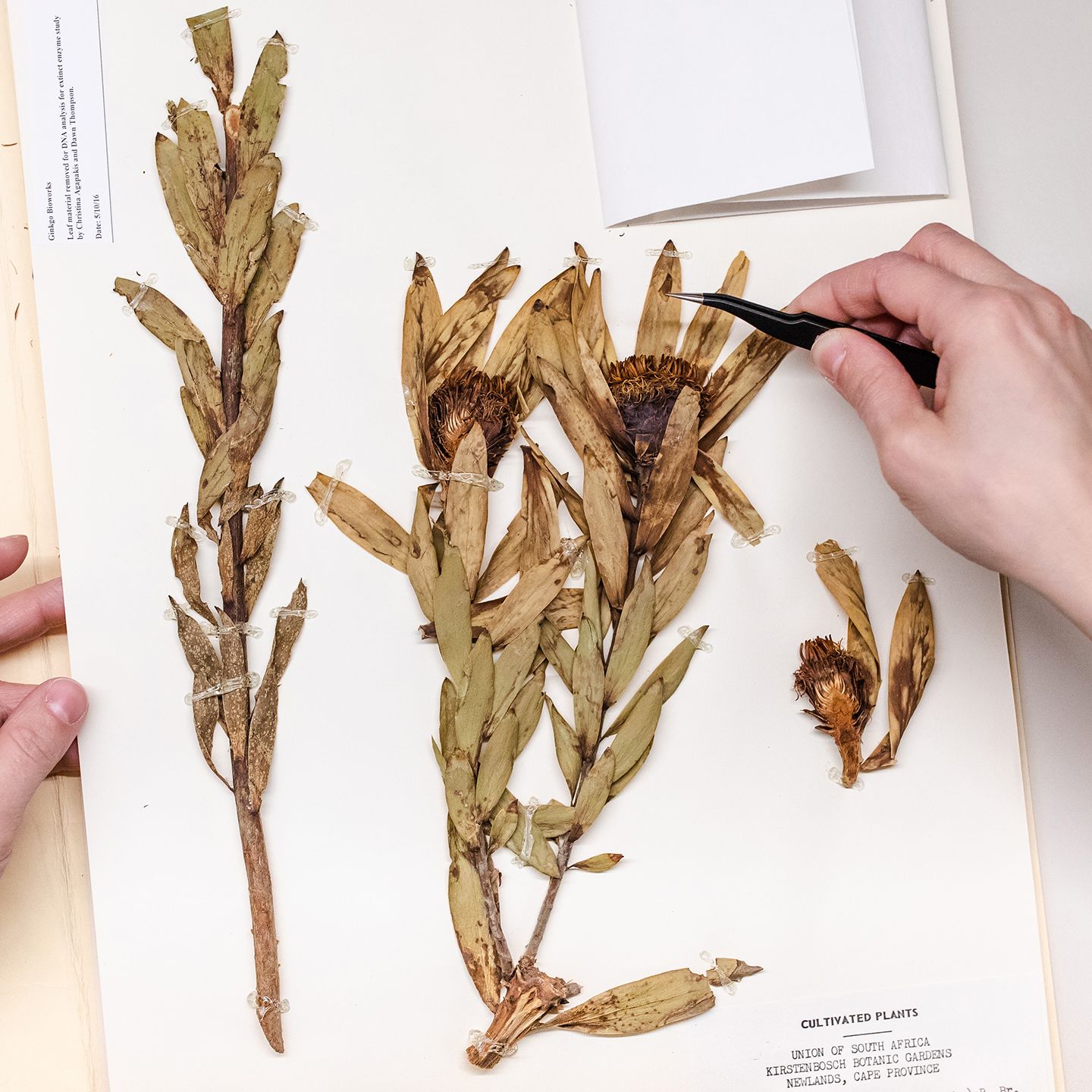
Christina Agapakis from Ginkgo Bioworks takes a tissue sample from a dried specimen of Leucodendron glandiflorum. Credit: Grace Chuang. © Ginkgo Bioworks, The Herbarium of the Arnold Arboretum of Harvard University.
Did you manage to piece the DNA back together?
The DNA was degraded, so the Ginkgo team worked with paleogeneticists at University of California Santa Cruz to extract the DNA. The Ginkgo team then used synthetic biology to first compare the sequences to known sequences from other species that produce fragrance enzymes, in a kind of matching process, and filled in the gaps. They then resynthesized the gene sequences, put them into yeast, and tested the fragrance molecules using mass spectrometry.
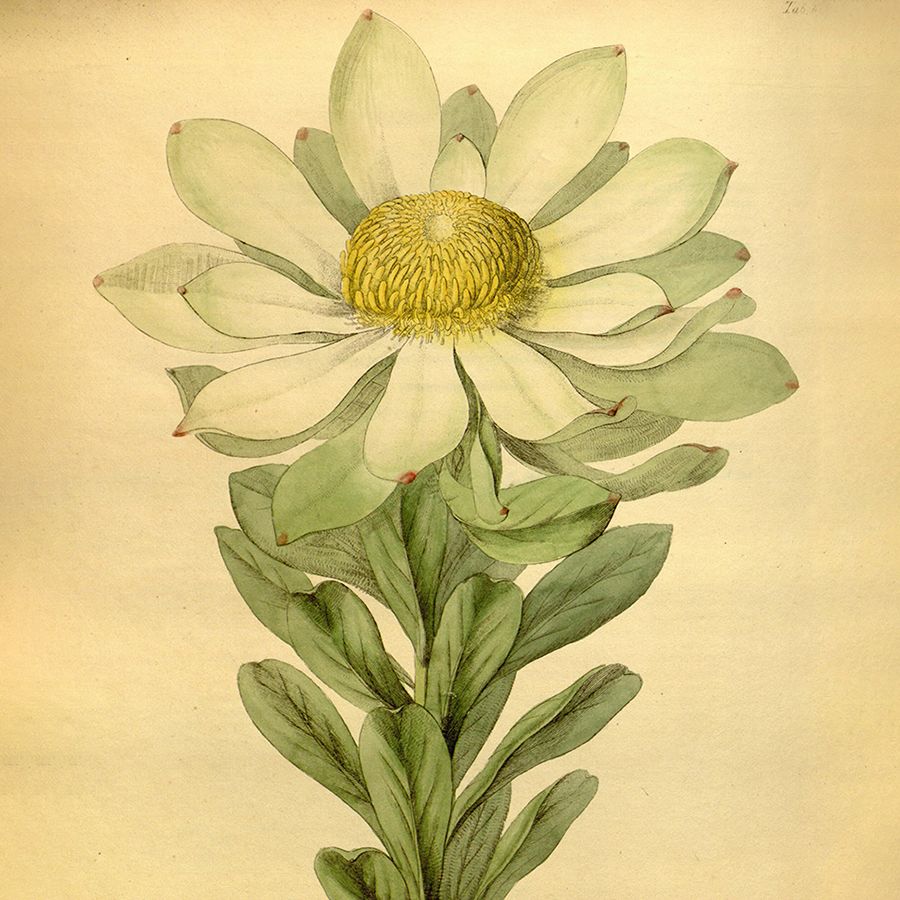
The species now known as Leucadendron grandiflorum. Illustration from Paradisus Londinensis: Or Coloured Figures of Plants Cultivated in the Vicinity of the Metropolis, London: printed by D.N. Shury and published by William Hooker,1805–1807. Credit: William Hooker, courtesy Biodiversity Heritage Library, provided by Missouri Botanical Garden
Hadn’t this been possible before?
I think the work was really new, although of course DNA sequencing and DNA synthesis tools had been around for decades. And no one had focused on lost flowers before this. The Gingko scientists and engineers produced a list of smell molecules that each plant may have produced. I was blown away. Christina had been telling me about this project for a few years, and now the list was real. It was dizzying. It inspires the sense of the sublime, an eighteenth-century theory from art and literature that encapsulates this feeling of awe and terror at the natural world.

Christina Agapakis of Ginkgo Bioworks taking tissue samples from a dried specimen of Hibiscadelphus wilderianus at the Harvard University Herbarium. Credit: Grace Chuang, courtesy of Harvard University Herbaria, © Ginkgo Bioworks, Inc., the Herbarium of the Arnold Arboretum of Harvard University.
Christina Agapakis of Ginkgo Bioworks taking tissue samples from a dried specimen of Hibiscadelphus wilderianus at the Harvard University Herbarium. Credit: Grace Chuang, courtesy of Harvard University Herbaria, © Ginkgo Bioworks, Inc., the Herbarium of the Arnold Arboretum of Harvard University.

A dried specimen of Orbexilum stipulatum, at Gray Herbarium of Harvard University. Credit: Grace Chuang, courtesy of Harvard University Herbaria, © Ginkgo Bioworks, Inc., the Herbarium of the Arnold Arboretum of Harvard University.
A dried specimen of Orbexilum stipulatum, at Gray Herbarium of Harvard University. Credit: Grace Chuang, courtesy of Harvard University Herbaria, © Ginkgo Bioworks, Inc., the Herbarium of the Arnold Arboretum of Harvard University.

Christina Agapakis from Ginkgo Bioworks takes a tissue sample from a dried specimen of Leucodendron glandiflorum. Credit: Grace Chuang. © Ginkgo Bioworks, The Herbarium of the Arnold Arboretum of Harvard University.
Christina Agapakis from Ginkgo Bioworks takes a tissue sample from a dried specimen of Leucodendron glandiflorum. Credit: Grace Chuang. © Ginkgo Bioworks, The Herbarium of the Arnold Arboretum of Harvard University.

The species now known as Leucadendron grandiflorum. Illustration from Paradisus Londinensis: Or Coloured Figures of Plants Cultivated in the Vicinity of the Metropolis, London: printed by D.N. Shury and published by William Hooker,1805–1807. Credit: William Hooker, courtesy Biodiversity Heritage Library, provided by Missouri Botanical Garden
The species now known as Leucadendron grandiflorum. Illustration from Paradisus Londinensis: Or Coloured Figures of Plants Cultivated in the Vicinity of the Metropolis, London: printed by D.N. Shury and published by William Hooker,1805–1807. Credit: William Hooker, courtesy Biodiversity Heritage Library, provided by Missouri Botanical Garden
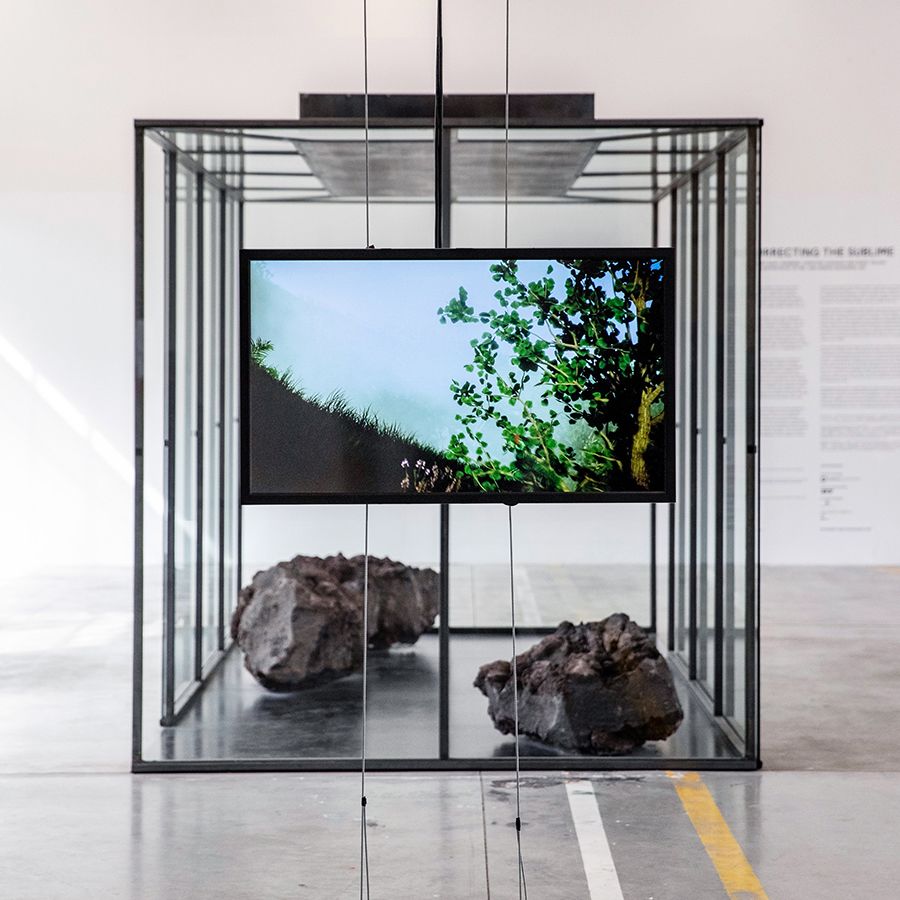
Installation of Resurrecting the Sublime at Biennale Internationale Design, Saint-Étienne, March 2019. Each booth is filled with the smell of an extinct flower. Credit: Christina Agapakis, Alexandra Daisy Ginsberg & Sissel Tolaas, with support from Ginkgo Bioworks and IFF Inc. © Pierre Grasset
How would you describe the flowers’ smells?
I am not a smell expert, unlike Sissel Tolaas, who reconstructed the smells from Ginkgo’s lists. But as an amateur I would describe the Leucadendron as deep and tobacco-y, the Orbexilum as citrusy and candy-like, and the Hibiscadelphus as rich.
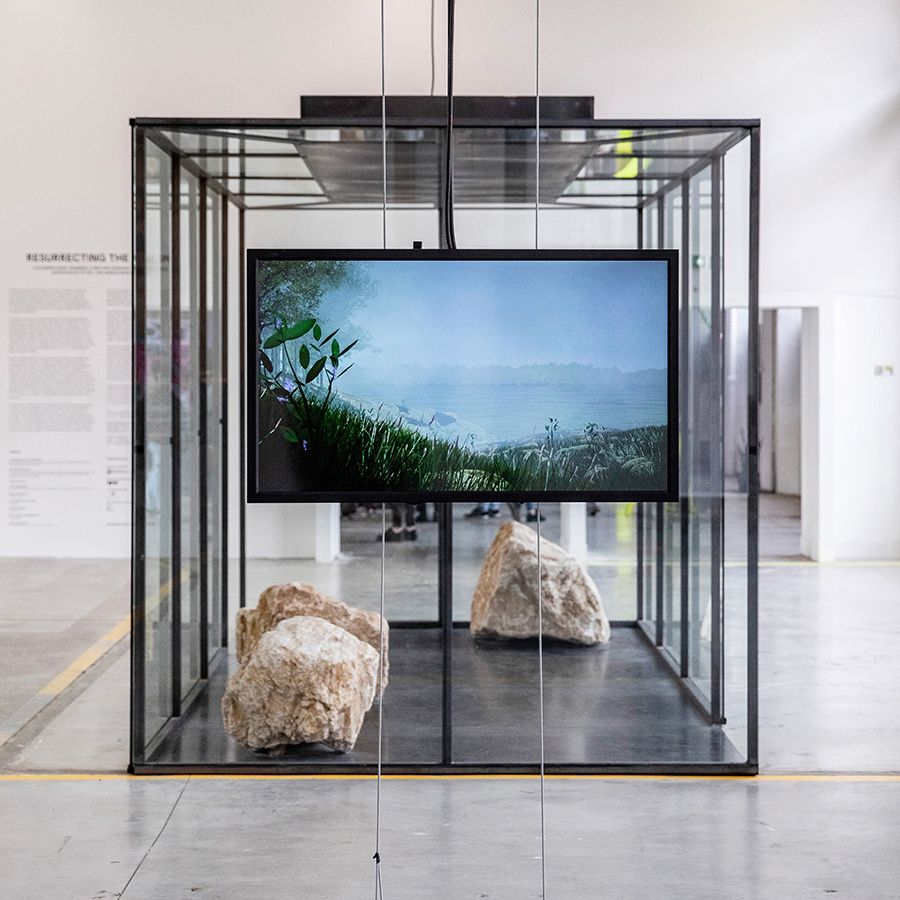
Installation of Resurrecting the Sublime at Biennale Internationale Design, Saint-Étienne, March 2019. Each booth is filled with the smell of an extinct flower. Credit: Christina Agapakis, Alexandra Daisy Ginsberg & Sissel Tolaas, with support from Ginkgo Bioworks and IFF Inc. © Pierre Grasset
What do you see as the rationale for bringing back lost scents?
It raises a lot of questions. We built these synthetic versions of each flower’s overall smell. But of course, they’re not accurate because we don’t know which molecules were actually in the flower, in what quantities, whether the molecules’ function was smell-related, or even if the genes were switched on to produce those molecules. Hibiscus flowers don’t really smell, as they are bird pollinated. What we end up with is a blurry picture of the past, a false yet powerful memory. But experiencing this creates an emotional, physical connection with the natural world. It is that sense of awe and terror and nature’s fragility in the face of human devastation. Each lost species has a knock-on effect on the pollinators it provides for, affecting the species that rely on those pollinators, affecting habitats, and step by step, contributing to climate breakdown. These plants may seem lost and insignificant, but their loss is significant.
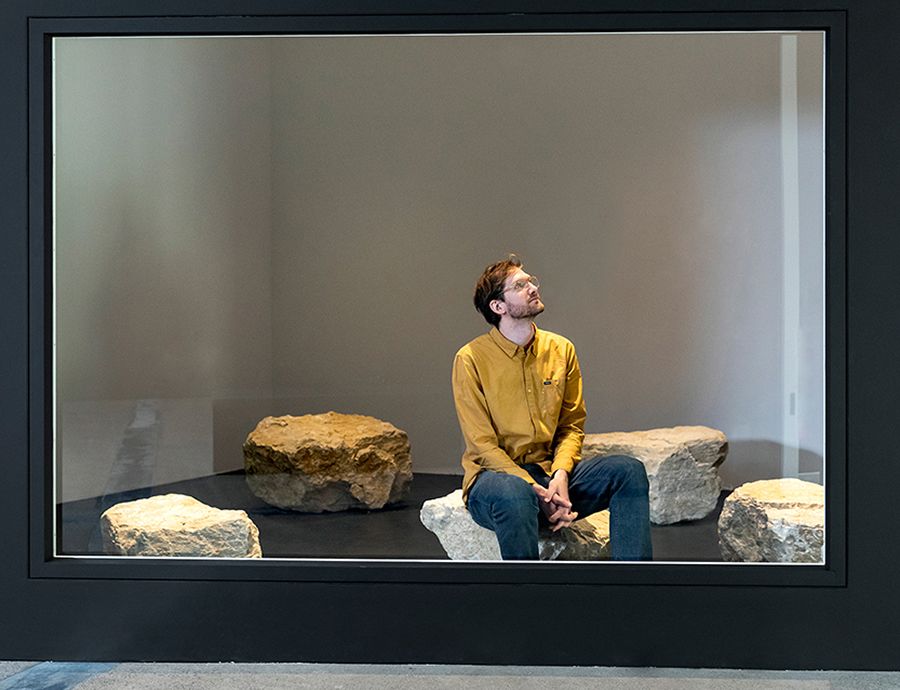
Installation view of Resurrecting the Sublime at the Natural History Museum Bern, 2020. © NMBE Rodriguez
How did your gallery installation capture and transmit that smell to visitors?
The installations are set up like traditional natural history dioramas. But instead of having a stuffed animal as the center of an extinction story, you, the human, are in the frame. In the version at the Natural History Museum, Bern, Switzerland, visitors enter the back of the diorama, turn the corner, and suddenly find themselves in a room containing no sign of living nature, just its traces: limestone boulders, the smell of the lost flower, the soundscape of its lost habitat, all whilst being watched by others. The intention is to make you slightly uncomfortable, to say: “this extinction is because of us.”
What are you trying to say to people by reviving these flowers’ aroma? How does your work touch people’s lives?
Why do we fetishize the new over what already exists? We see technology and nature as separate, but we are part of the natural world and will not survive without it. We invest billions in innovation, on creating new life, whether synbio or AI, but have shamefully failed to protect the extraordinary lifeforms that already exist (of course, the ‘we’ here is not all peoples). Is it because we don’t see other lifeforms as useful to us, whereas new technologies are seen as useful to humanity? This idea of utility is horrifically short-sighted. This paradox is both fascinating and something we urgently need to understand.

Installation of Resurrecting the Sublime at Biennale Internationale Design, Saint-Étienne, March 2019. Each booth is filled with the smell of an extinct flower. Credit: Christina Agapakis, Alexandra Daisy Ginsberg & Sissel Tolaas, with support from Ginkgo Bioworks and IFF Inc. © Pierre Grasset
Installation of Resurrecting the Sublime at Biennale Internationale Design, Saint-Étienne, March 2019. Each booth is filled with the smell of an extinct flower. Credit: Christina Agapakis, Alexandra Daisy Ginsberg & Sissel Tolaas, with support from Ginkgo Bioworks and IFF Inc. © Pierre Grasset

Installation of Resurrecting the Sublime at Biennale Internationale Design, Saint-Étienne, March 2019. Each booth is filled with the smell of an extinct flower. Credit: Christina Agapakis, Alexandra Daisy Ginsberg & Sissel Tolaas, with support from Ginkgo Bioworks and IFF Inc. © Pierre Grasset
Installation of Resurrecting the Sublime at Biennale Internationale Design, Saint-Étienne, March 2019. Each booth is filled with the smell of an extinct flower. Credit: Christina Agapakis, Alexandra Daisy Ginsberg & Sissel Tolaas, with support from Ginkgo Bioworks and IFF Inc. © Pierre Grasset

Installation view of Resurrecting the Sublime at the Natural History Museum Bern, 2020. © NMBE Rodriguez
Installation view of Resurrecting the Sublime at the Natural History Museum Bern, 2020. © NMBE Rodriguez
The Pollinator Commission

You describe your latest AI-driven work at the Eden Project as an unnatural garden. Why so?
I am creating an artwork not for humans, but for pollinators, whose numbers are in global jeopardy. In September 2021, we are planting a 52-meter-long garden at the Eden Project in Cornwall [UK], designed by an algorithm to optimize ‘empathy’ for other species. I’ve defined that as planting to support the maximum diversity of pollinators, using carefully developed regional planting lists that the algo selects and optimizes from. Hopefully, this garden will look strange to human tastes—with every color and size and shape of flower included, plus patterning to support different foraging strategies. It is an unnatural garden designed for nature. I want to challenge what we think of as a garden and who it’s planted for. The algorithm will be online so anyone can create their own artwork for pollinators which we invite them to plant. Keep updated on the Eden Project website.

Current exhibitions of Resurrecting the Sublime
- How Will We Live Together?
Venice Architecture Biennale
Venice, Italy
22 May 2021 – 21 November 2021
- Apocalypse – End Without End
Natural History Museum
Bern, Switzerland
11 November 2017 – 13 November 2022
- AI: More than Human
Fernán Gómez Centro Cultural
Madrid, Spain
22 July 2021 – 9 January 2022
- UnNatural History
Herbert Art Gallery
Coventry, UK
28 May 2021 – 22 August 2021

